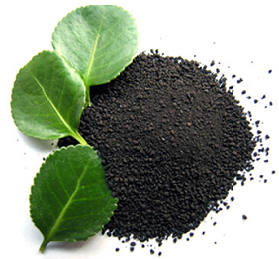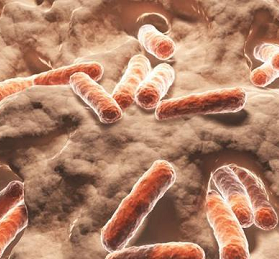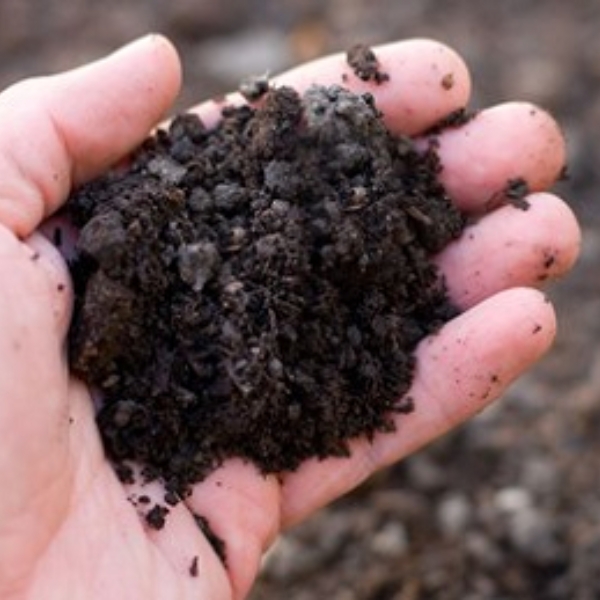The Importance of Organic Matter in Soil Fertility
One of the most overlooked and neglected components in successful fertility management is the role that organic matter plays. Soil organic matter (SOM) is the very foundation of soil quality and healthy plants which we all are ultimately judged against. Efficient soil and fertilizer management practices starts with organic matter and feeding the microbes in the soil. To be fair, soil organic matter can be a confusing topic. So, let’s break it as simply as we can.
Soil organic matter is the organic component of soil, consisting of three primary parts:
- “Fresh” - Small, fresh plant residue material and living soil organisms
- “Active” – Decomposing organic matter
- “Humus” – Stable organic matter

Each of the parts listed above plays a vital role of the process for constantly creating SOM in the soil. The “fresh” stage material decomposes at a rate of 10:1, meaning for every 10 pounds of organic material, 1 pound of “humus” organic matter should be generated. For this “fresh” organic material to turn into organic matter during the “active” stage, it must be converted by microorganisms into “humus”, a resistant decomposed state that benefits the soil. What’s important to understand about this process is that it is slow and takes time to happen, but it is always happening. Which is one reason that it should be monitored and managed effectively to optimize soil health and fertility for the turf.
What Does Soil Organic Matter Actually Do?
The short answer is…a lot. Here are the highlights as they pertain to turf maintenance.
Moisture Retention
Moisture absorption and retention are some of the most important contributions of soil organic matter. Research has estimated that each pound of carbon in the soil can retain up to 40 lbs. of water. An acre of soil at a 6” depth weighs approximately 2,000,000 lbs. and if that contains 1% organic matter, we can estimate that it has 20,000 lbs. of total organic matter. Furthermore, if we estimate that the organic matter is 40% carbon, then it contains the equivalent of 8,000 lbs. of carbon. So ultimately, we can calculate that the soil can hold 40 lbs. of water for each lb. of carbon; resulting in 320,000 lbs. of water or approximately 40,000 gallons of water per acre at 1% organic matter (8.3 lbs./gal water). Since water usage on golf courses and home lawns constantly come under fire, maintaining an optimal SOM percentage allows for a healthier lawn that requires less watering or irrigation use.
Nutrient Retention
Soil organic matter contains, attracts and holds multiple soluble plant available nutrients so they are retained by the soil and are available to the turf plant’s root system when they need them during the growing season. In addition, as soil organic matter breaks down or is consumed by microorganisms, part of these nutrients ae released. On average, each 1% of SOM in the top 6” of a medium textured soil (silt and loam soils) releases about 10-20 pounds of nitrogen, 1 to 2 pounds of phosphorus, and 0.4 to 0.8 pounds of sulfur per acre per year.
For example, if there is 1% organic matter and 10% of it is decomposed in a year that would be equivalent to 20,000 lbs. of organic matter and 2,000 lbs. decomposed. If the organic matter is 1% nitrogen, that would be 20 lbs. of nitrogen per acre released and available for uptake. Obviously not all of this is taken up by the plant and some of these nutrients, especially nitrogen, will get lost to leaching and volatility.
Increased Microorganism Diversity

An adequate presence of SOM leads to an increase in the number and types of microorganisms in the soil, which can lead to reductions in plant pathogens, diseases and plant pathogenic nematodes. As plants grow, the energy of the sun is trapped and stored. Just as we get energy from eating plants, microorganisms in the soil get energy by continuing to break down plant derived organic matter. The soil microorganisms include bacteria, fungi, protozoa, nematodes, and many other life forms that make up the soil food web. The soil food web is fed in part by plant roots which pass sugars out into the soil to support microorganisms which eventually die and provide new available nutrients and minerals for the plant. More organic matter leads to more microorganisms and leads to more available minerals and nutrients.
Erosion Control
Organic matter reduces the chance of soil erosion because it acts as glue, sometimes reducing it up to 20 or 30 percent for only having 1 to 3 percent of organic matter. The greater the SOM, the less likely you are to lose any valuable soil during heavy rain events or high wind situations.
Carbon Sequestration
Organic matter also works as an efficient air filtration system. Carbon dioxide in the environment is transferred into the soil and helps off-set emissions from fossil-fuels and carbon-emitting activities. This transfer can enhance the long-term productivity of the soil as well as enhance the soil quality.
Testing for Soil Organic Matter
Soil testing is an essential and affordable practice to improve the percentage of organic matter within the soil. This is done by taking plug samples from the soil, typically at the depth of the root zone. The results of this analysis will tell the percentage of organic matter that the soil currently contains and typically provides estimated recommendations for the N, P, K and micronutrients for the specific turf type you provided with the soil test.
Climate Factors Affecting Soil Organic Matter
Inherent factors affecting soil organic matter such as climate and soil texture cannot be changed. Climatic conditions, such as rainfall, temperature, moisture, and soil aeration (oxygen levels) affect the rate of organic matter decomposition. Organic matter decomposes faster in climates that are warm and humid and slower in cool, dry climates. Organic matter also decomposes faster when soil is well aerated (higher oxygen levels) and much slower on saturated wet soils. Managing the soil organic matter levels will vary greatly dependent on where you are at.
How to Improve the Percentage of Soil Organic Matter

Building up the percentage of organic matter is not an overnight process; it is a long-term goal. Soil organic matter generally increases where biomass production is higher and where organic material additions occur. Plant residue with a low carbon to nitrogen (C/N) ratio have a high nitrogen content and decompose more quickly than those with a high C/N ratio and do not increase soil organic matter levels as quickly. Make a concerted effort to implement practices that increase soil moisture, soil temperature, and optimal aeration to accelerate SOM decomposition. One of the best ways to improve organic matter is to fertilize properly. Being on the correct fertilization regime helps to build stronger roots and stronger roots keep organic matter where it needs to be. But do not overdo it. Application of more than needed nitrogen fertilizer also stimulates soil bacteria to degrade more organic matter and should be avoided. Incorporation of excessive amounts of fresh organic matter may also over stimulate the soil food web and decrease organic matter.
What’s the Goal?
There is no set rule on how much organic matter the soil needs to have to maintain healthy turf, but typically, organic matter ranges from anywhere from 1-6%. Generally, a home lawn with organic matter above 3% is ideal. For reference purposes, soils that range from 12-18% SOM are considered to be organic soil.
To sum it up, organic matter is very important and contributes greatly to soil quality and turf health. It is important to the soil, important to the turf’s life and important to the environment. The active management of soil organic matter is a positive a worth-while investment for any golf course superintendent or turf manager. Remember to test the soil annually to see if the percentage of organic matter is increasing and do not be discouraged if that percentage has not changed or has only changed slightly. Though the process of improving organic matter is a slow one, but with enormous upside benefits.